In today’s edition of The A-Z of Iceland, I’m going to shine a little light on a lesser-known area of Iceland: the Eastfjords.
Tourists flock to the south-west of Iceland. A lot of them cover the south coast, between Hveragerði and Jökulsárlón, the glacial lagoon. A reasonable number are drawn to the north, to Akureyri and Mývatn and the volcanic delights of that region. Some even go to the wilds of the remote and majestic Westfjords. But the Eastfjords? They don’t really have any obvious delights, it’s mostly just a place to drive past on your Ring Road trip.
But they’re worth a few days so let’s talk.
The capital of the region is Egilsstaðir, a small and not very exciting town. It’s that service town that the region needs – it’s the place with the small airport, a couple of supermarkets and a few decent hotels but pretty much nothing else. The campsite is pleasant – it has a piece of cliff within it which makes it feel relatively wild despite the fact that all the best amenities for at least 100 miles are within walking distance. And the town has a nice pool too, although that more or less goes without saying.

Since there’s not a whole lot going on in this region, the biggest draw is the nature – this is one of the relatively rare places in Iceland that’s not lava field. Southwest of Egilsstaðir is Lögurinn, a long narrow lake that’s actually a bulge in the Largarfljót glacial river. If you fly overhead, you can see where a freshwater stream enters the side of the lake, mixing clear turquoise water with the muddy grey-brown glacial water. Lögurinn is also known for its monster. This is the Icelandic version of the Loch Ness Monster, except lesser-seen.

On the south side of Lögurinn is a forest. For a country that’s ~2% forested, any trees taller than the average person are a novelty and the birch woodland at Hallormsstaður is a pretty big collection of tall trees – in fact, not only is it Iceland’s biggest forest, it’s also designated a National Forest. If you have trees in your home country, you may be less excited about it than the Icelanders.
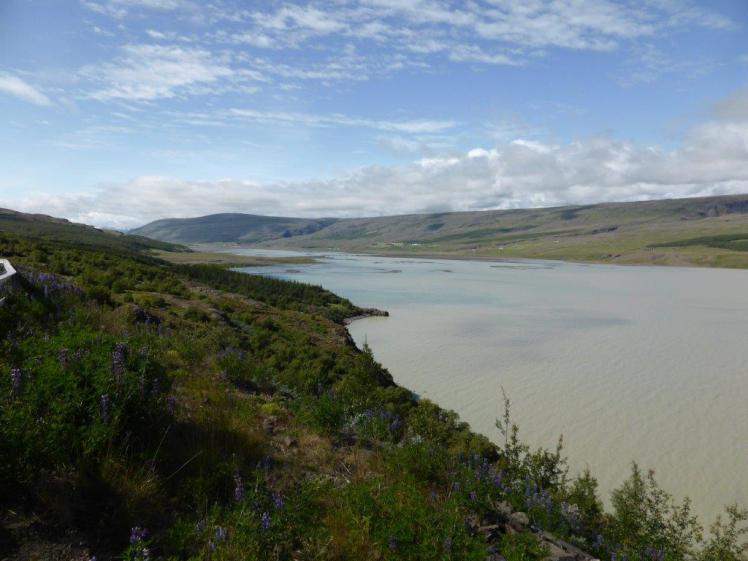
Then there’s Hengifoss. Iceland’s 128m, 3rd highest waterfall is a good enough reason alone to break your Ring Road journey here. It’s a bit of a hike up onto the moors but you soon start following the surprisingly deep canyon it’s carved and at last, at the top, you’ll find the waterfall itself. It’s pretty. It’s carved a half-moon shaped bite out of the hilltop which makes it look like it’s falling into a canyon. The rock wall is black and grey striped but never mind that because it’s also got bands of iron-rich red rock here and the red stripes are what people come to see.
Read my blog about my hike to Hengifoss here
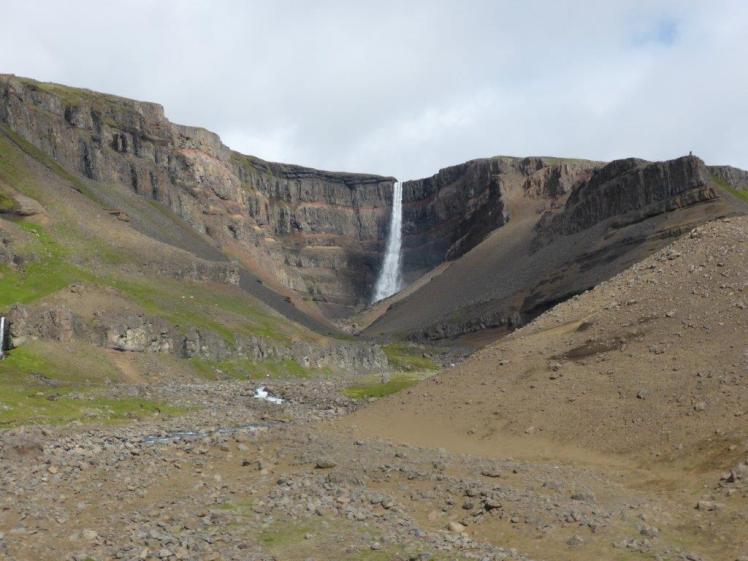
Let’s head out to the actual fjords. The Eastfjords have a great coastline, although it makes getting around a little slow. Heading south from Egilsstaðir, you’ll drive down a long green valley before emerging into the first of three small towns. The first one, Reyðarfjörður, is notable because it’s home to part of the town in Fortitude, the 2015 Sky Atlantic TV series. You’ll know if you saw it. It was perpetually snowy, almost always dark and more gruesome than anything I’ve ever seen on TV before. I parked outside its little roadhouse, which plays the main supermarket, and spent a night in one of its guesthouses, which plays the main pub/hotel.
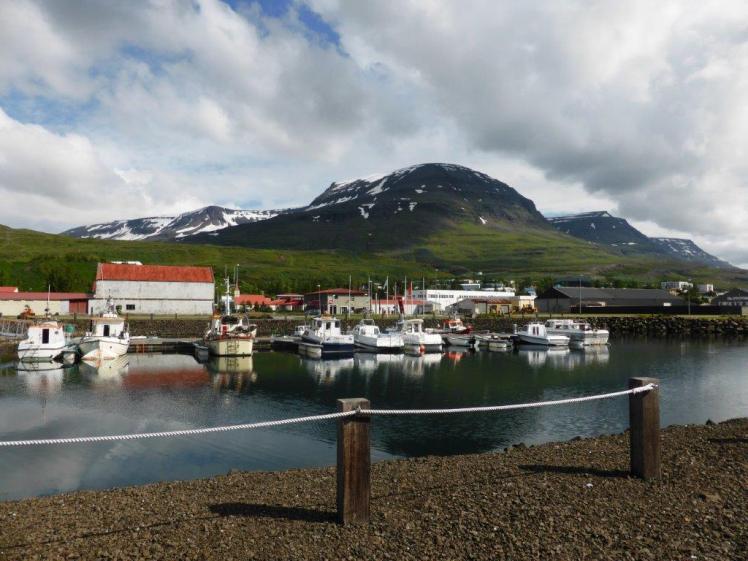
The second town is Eskifjörður. Eskifjörður has a nice pool with nice views over the mountain ridges. When I was staying in Reyðarfjörður, I drove out to Eskifjörður in the evenings to sit in its pool.

The third town is Neskaupstaður, which is on the other side of the peninsula and accessed via a tunnel – a very narrow tunnel and one that really did feel to me like it was built to protect Neskaupstaður from some kind of world-ending event. I’m sure Neskaupstaður is very pleasant but I didn’t stay long. I know it’s home to an Edda hotel – that’s a chain of summer-only cheap basic hotels that are boarding schools and colleges during the rest of the year.

The great thing about any of the towns along this stretch of coast is the view. Deep but narrow fjords, high mountains, navy water, green slopes, blue sky… there’s not much to do in any of these towns but you should pick a bit of coast and drive it for the views. There’s a great viewpoint between Reyðarfjörður and Eskifjörður, right where the road turns back along the end of the peninsula. I stopped there pretty much every day.

East of Egilsstaðir is Seyðisfjörður, a small town at the mouth of a fjord. This is where the ferry arrives from Denmark and the Faroes but on days when the ferry isn’t in, it’s very quiet here. But it’s pretty and it has a bubbling little waterfall running along beside the road as you dive down off the high mountain pass towards the waterside village. And when I say “high mountain pass”, I mean it was blue sky and sunshine and looked tropical but right at the top was a lake and it was frozen solid. It’s a good drive.


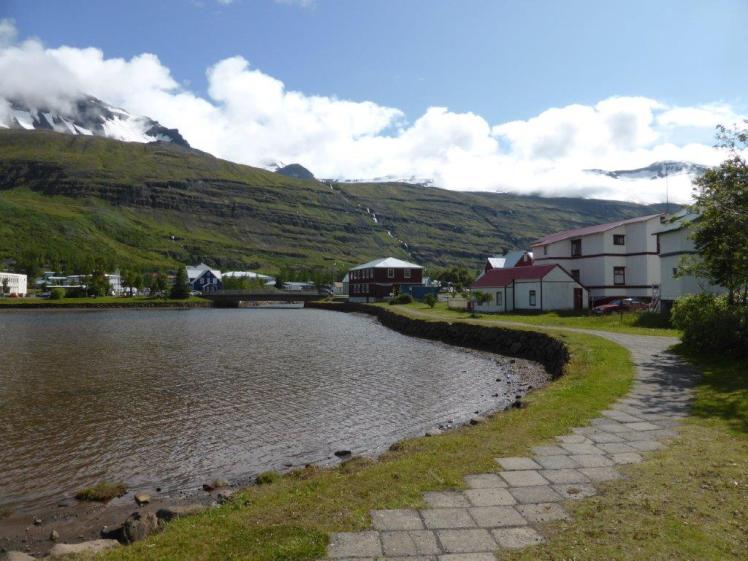
The last small uneventful village to name is Borgarfjörður Eystri, north of Egilsstaðir. You have to beware of the road out here – part of it is bordered by very unstable cliffs that could drop a minimum of many tonnes of crumbly volcanic rock-soil straight onto the road. It’s probably ok. If it wasn’t, I’m sure they’d close the road. But this is not the place to park while you have a picnic or take photos. Just get past it as quickly as you can. The village itself is pretty and it’s a good place for birdwatching and for enjoying the scenery. Nothing to do there, as usual. Enjoy this little video of me driving back (sorry about the filthy windscreen, I didn’t notice at the time):
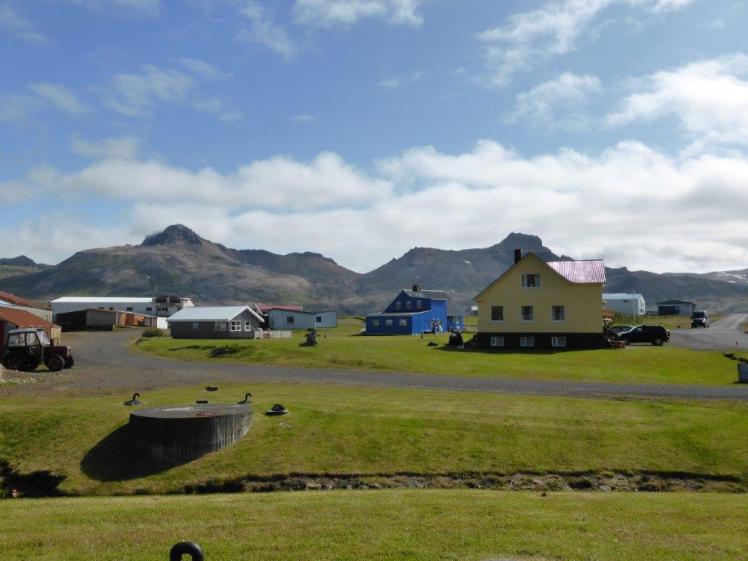
In summary: there’s not a lot to do in the Eastfjords, that’s why it’s not overrun with tourists. But it’s pretty and peaceful and a good stop for a few days of enjoying Iceland without the pressure of “I need to see/do The Thing!”
Like it? Pin it!
